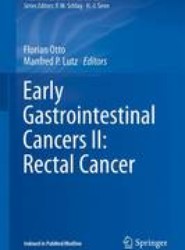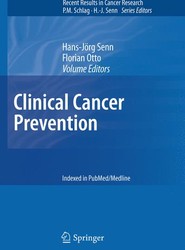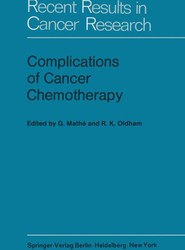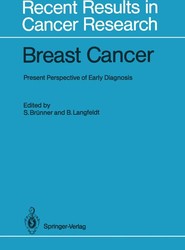(To see other currencies, click on price)
MORE ABOUT THIS BOOK
Main description:
87 3. All polyps should be promptly treated by resection or fulguration as soon as possible after their discovery. 4. The physician must assume the responsibility for impressing the patient with the necessity for frequent and regular follow-up examinations. These examinations must be done at no longer than 1-year intervals for at least 5 years after treatment of the initial lesion and preferably at yearly intervals thereafter. 5. A minimal follow-up examination must include a proctoscopic examination as well as a careful roentgenologic examination of the colon. Summary The literature concerning multiple colonic carcinomas has been reviewed. Data have been presented on 261 cases in which multiple carcinomas of the colon were seen at the Mayo Clinic from January 1, 1944, through December 31, 1953. 0 This represents a known rate of occurrence of 4.3 /0. A marked tendency to multiplicity has been observed in carcinoma of the colon associated with multiple polyposis or with chronic ulcerative colitis. Some evidence has been obtained of hereditary factors in predisposition to malignant disease of the colon. When the diagnosis of a malignant lesion of the colon or rectum has been made, the entire large bowel must be considered a potential source of malignant disease. An integral part of the management of carcinoma of the large bowel must be constant vigilance to ensure early diagnosis and adequate treatment of both simul taneous and interval lesions. References ALBRECHT, P.: Ober die Multiplizitat primarer maligner Geschwiilste. Oncologia (Basel) 5, 12 (1952).
Contents:
A. Introduction and Presentation of Data.- 1. Criteria for Diagnosis.- 2. Classification.- 3. Selection of Cases for Our Study.- 4. Observations.- 5. Rate of Occurrence.- 6. Report of Cases.- Summary.- References.- B. Multiple Primary Malignant Neoplasms of Different Tissues or Organs.- 1. Introductory Comments.- Reference.- 2. Occurrence of Multiple Cancers within the Same or Related Organ Systems.- a) Multiple Cancers Involving the Female Genitalia and Breasts.- b) Coexistence of Epithelial Carcinoma of the Bladder and Adenocarcinoma of the Prostate.- References.- 3. Second Primary Cancers Induced by Treatment of an Initial Malignant Neoplasm.- a) Therapeutic Ionizing Radiation.- b) The Stewart-Treves Syndrome.- c) Carcinoma of the Male Breast Developing during Estrogen Therapy for Carcinoma of the Prostate.- References.- 4. Hereditary Influences in Patients with Multiple Primary Malignant Neoplasms.- References.- 5. Blood Groups and Multiple Primary Malignant Neoplasms.- References.- 6. Leukemia or Lymphoma and Coexistent Primary Malignant Neoplasms.- a) Cases Reported in the Literature.- b) Selection of Our Cases for Study.- c) Leukemia Plus Malignant Lesions.- d) Lymphoma Plus another Malignant Lesion.- e) Coexistence of Kaposi's Sarcoma and Leukemia or Lymphoma.- f) Coexistence of Epitheliomas of the Skin and Chronic Lymphatic Leukemia.- g) Cancer and Acute Leukemias: Effects of Radiation.- h) Incidence.- i) Comment.- Summary.- References.- 7. Carcinoid Tumors of the Small Intestine and Second Primary Cancers.- References.- 8. The Coexistence of Primary Lung Cancer and Other Primary Malignant Neoplasms.- a) Selection of Cases.- b) Observations.- c) Comment.- Summary.- References.- C. Multiple Primary Malignant Neoplasms of Multicentric Origin.- 1. Introductory Comments.- References.- 2. Multicentric Epitheliomas of the Skin.- References.- 3. Multicentric Carcinomas of the Oral Cavity.- a) Selection of Cases.- b) Observations.- c) Comment.- Summary.- References.- 4. Multicentric Epitheliomas of the Lips.- References.- 5. Multicentric Epitheliomas Involving the Larynx, Pharynx, and Esophagus.- Reference.- 6. Multicentric Adenocarcinomas of the Stomach.- a) Present Study.- b) Results.- c) Comment.- References.- 7. Multicentric Carcinoid Tumors.- References.- 8. Multicentric Adenocarcinomas of the Colon and Rectum.- a) Selection of Cases.- b) Results.- c) Comment.- Summary.- References.- 9. Multicentric Epitheliomas of the Urinary Tract.- a) Multicentric Tumors of the Bladder.- b) Multicentric Lesions Associated with Neoplasms of the Renal Pelvis.- References.- 10. Multicentric Carcinomas of the Cervix, Vagina, Vulva, and Anus.- Reference.- 11. Bilateral Carcinomas of the Breast.- a) Criteria for the Diagnosis of Independent Cancer in the Second Breast.- b) Observations.- c) Unsimultaneous (Nonsynchronous) Cancer in the Second Breast.- d) Simultaneous (Synchronous) Cancer in the Second Breast.- e) Independent Cancers of the Second Breast in Association with Other Primary Malignant Neoplasms.- f) Comment.- g) The Problem of Prophylactic Simple Mastectomy of the Second Breast.- Summary.- References.- 12. Bilateral Testicular Cancers.- References.- 13. Bilateral Ovarian Carcinomas.- References.- 14. Multicentric Bronchial Carcinomas.- References.- 15. Multicentric Carcinomas of Parenchymatous Organs.- a) Multicentric Carcinomas of the Kidney.- b) Multicentric Carcinomas of the Thyroid and Pancreas.- c) Multicentric Hepatomas.- Reference.- 16. Multicentric Gliomas of the Central Nervous System.- References.- 17. Multicentric Malignant Neoplasms of the Reticuloendothelial System.- Reference.- 18. The Case for Multicentricity of Origin of Malignant Neoplasms.- References.- Summary.
PRODUCT DETAILS
Publisher: Springer (Springer-Verlag Berlin and Heidelberg GmbH & Co. K)
Publication date: June, 2012
Pages: None
Weight: 222g
Availability: Not available (reason unspecified)
Subcategories: Oncology
From the same series
Friedhelm Raue
Thomas Ried
Christian Wittekind
Florian Otto
Markus W. Buchler
C. Stroszczynski
Manfred Dietel
H.-J. Senn
Otmar Schober
Jean-Nicolas Vauthey
Elmar Detering
Richard P. Baum
G. Mathe
R. Gross
Florian Otto
Uwe M. Martens
Michail Ignatiadis
Georges Mathe
M. S. Griem
Jack Cuzick
Michael Gnant
Ute Goerling
Hans-Jorg Senn
Werner H. Kirsten
F.A. Langley
Kuan-Teh Jeang
Janusz Jankowski
J. Bernard
Thomas Moehler
Andrea Tannapfel
S.K. Carter
R. S. Nelson
Kerry S. Courneya
Rolf D. Issels
Hans-Jorg Senn
Florian Otto
W. Fischbach
Umberto Veronesi
Otmar Schober
Paul M. Schneider
Hans-Jorg Senn
Wolfgang Tilgen
Jean-Nicolas Vauthey
Richard P. Baum
J. L. Hayward
W. H. Kirsten
Henry T. Lynch
Georges Mathe
G. T. Pack
Leon Goldman
R.G. Freeman
L. Manuila
Agnes Glaus
Rudiger Liersch
Richard Schindler
Uwe M. Martens
W.A. Fuchs
Michail Ignatiadis
Edward S. Meek
P. Roy-Burman
Merle Mizell
Jean Lindenmann
Pavel Koldovsky
Enrico Anglesio
Georges Mathe
Hans-Jorg Senn
James H. Goldie
Donald Metcalf
Siegfried Seeber
Israel Penn
B. Sokoloff
Manfred Schwab
E. Grundmann
H.-D. Pape
Robert S. Nelson
G. Mathe
J. Lange
G. Bonadonna
J. Szymendera
H. B. Marsden
K. E. Stanley
E. Grundmann
C. Bohuon
Pierre Denoix
A. C. Templeton
Ekkehard Grundmann
Michael Wannenmacher
Ivan Damjanov
Wolf-Dieter Ludwig
Friedhelm Raue
M. L. Jacobs
H.K. Muller-Hermelink
Rita Engenhart-Cabillic
E. Grundmann
Peter M Schlag
E. Grundmann
Ekkehard Grundmann
G. Mathe
Donald Metcalf
S. Brunner
F. F. Holmes
G. Mathe
G. Mathe
Pierre Band
Stephen C. Schimpff
K. Schwemmle
Michael Gnant
K. Hoffken
Friedhelm Raue
H. R. Scheurlen
Aron Goldhirsch
H. Acker
Hans-Jorg Senn
F. G. J. Hayhoe
William Duncan
E. Thiel
Hans-Jorg Senn
K. Musshoff
Hans-Jorg Senn
A. Rossi-Fanelli
Peo C. Koller
Volker Diehl
K. Hoffken
H.-J. Senn
Bruce S. Schoenberg
G. St. Arneault
S.K. Carter
B. Henningsen
J. Hekmatpanah
G. Mathe
E. Grundmann
Hans-Jorg Senn
G. Mathe
Sam Brunner
Hans-Jorg Senn
V. Hofmann
Michael Wannenmacher
G. Wagner
Hans-Jorg Senn
Rudolf Pichlmayr
Frank M. Torti
Michael Wannenmacher
William Duncan
G. Mathe
M. Bamberg
H.-P. Lohrmann
E. Grundmann
Niels Neymark
Peter M Schlag
P. Koldovsky
G. Nass
W. Duncan
Ekkehard Grundmann
Richard P. Gallagher
Hans-Jorg Senn
W. Duncan
W. Duncan
S.K. Carter
Michael Molls
Sam Brunner
Peter Boyle
Maurizio Ponz de Leon
U. Reinhold
Gunter Burg
K. Hoffken
H.-J. Senn
F.W. Schildberg
Beat Thurlimann
Janusz Jankowski
Thomas Moehler
Andrea Tannapfel
Kerry S. Courneya
H.-J. Senn
Per-Ulf Tunn
Andreas von Deimling
Antonella Surbone
Ursula Kapp
Hans-Jorg Senn
Santiago Gonzalez-Moreno
Hanno Riess
Paul M. Schneider
Uwe M. Martens
Rudiger Liersch
Renzo Brun del Re
Andreas von Deimling
Ursula Kapp
Per-Ulf Tunn
Hanno Riess
Antonella Surbone
Manfred Dietel
Santiago Gonzalez-Moreno
Louis Denis
H.-J. Senn
C. Stroszczynski






























































































































































































































